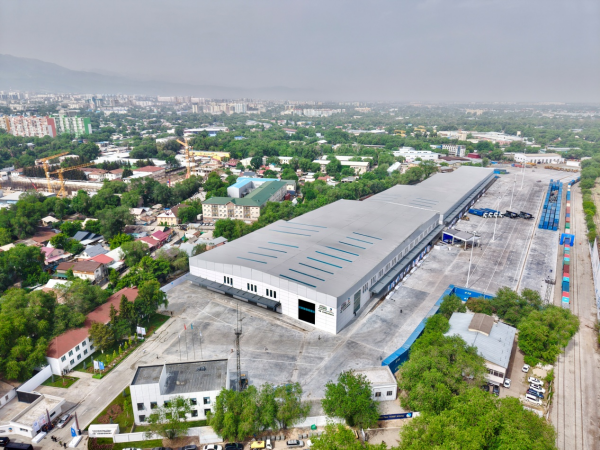The Xi’an Kazakhstan Terminal — the largest logistics and transportation hub currently in Kazakhstan — has been completed and operational.

The Xi’an Kazakhstan Terminal — the largest logistics and transportation hub currently in Kazakhstan — has been completed and operational. [Photo/sasac.gov.cn]
The project was led by China State Construction Silk Road Investment Co., Ltd. and built by China Construction Sixth Engineering Bureau Corp., Ltd., subsidiaries of China State Construction Engineering Corporation (CSCEC).
As a key outcome of the first China-Central Asia Summit, the terminal is set to provide a fast-track channel for trade between the two countries and further deepen economic, cultural, and people-to-people exchanges.
Located adjacent to the Almaty-2 Railway Station, the terminal spans 9.8 hectares and includes a comprehensive warehouse, container yard, railway operation lines, and supporting facilities. It is designed to handle 115,000 TEUs annually.
The project team removed outdated railway lines, buildings, cranes, and pipelines, and rebuilt a modern one-stop logistics center, including a 23,300-square-meter warehouse, parking and container areas, trailer loading zones, internal roads, rebuilt rail lines, and supporting facilities — designed to meet the needs of today’s logistics industry.
From project launch to delivery, CSCEC leveraged their synergy with an integrated design and construction model. The team efficiently adapted designs and technical standards to local conditions while maintaining construction quality and speed.
Through meticulous planning, the team poured 3,000 square meters of concrete in a single day, completed 450 meters of railbed in just three days, and assembled and welded 23,400 square meters of steel trusses in 20 days. With 1,000 pieces of equipment operating across 23 coordinated work zones, the entire project was completed in just 88 days.
Built to support the China-Europe freight train service from Xi’an, the terminal links two key Belt and Road cities: Xi’an and Almaty. It is expected to handle up to 800 “Chang’an” freight trains and 700,000 tons of cargo annually.
(Executive editor: Yuan Ting)